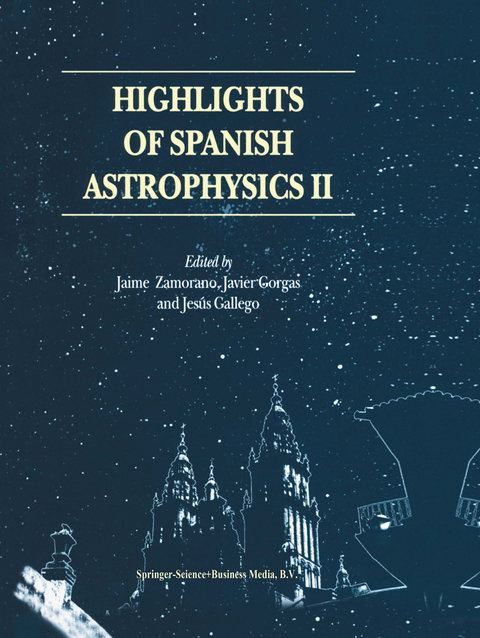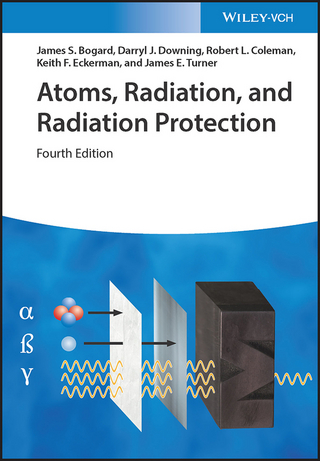
Highlights of Spanish Astrophysics II
Springer (Verlag)
978-90-481-5705-1 (ISBN)
This volume contains the Proceedings of the Fourth Scientific Meeting of the Spanish Astronomical Society (Sociedad Espanola de Astronomfa, SEA). The meeting was held at the Universidade de Santiago de Compostela in Galicia from September 11 to 14, 2000. The event brought together 156 participants who pre- sented their latest results in many different subjects. In comparison with the previous scientific meetings of the Society, the numbers of oral talks and poster contributions (95 and 51, respectively) are rapidly increasing, confirming that the SEA conferences are becoming a point of reference to assess the interests and achievements of astrophysical research in Spain. During the meeting, the SEA made public the granting of the Prize to the Best Spanish Ph. D. Thesis in As- tronomy and Astrophysics for the period 1998-1999 to Dr. H. Socas. This is the first time that the SEA is awarding this prize, which aim is to encourage young spanish astrophysicists to pursue a high level scientific career. The Society is indebted to the Universidade de Santiago de Compostela, and, in particular, to the Observatorio Astronomico Ramon Marfa Aller, for its hospi- tality.
The Local Organizing Committee took care of all the logistics details to ensure a nice stay for all the participants. The effort of the Scientific Organizing Committee was decisive in determining the organizational and scientific success of the meeting.
Preface. Organizing Committees. List of Participants. Extracting cosmological information from galaxy spectra and observations of high-redshift objects (Invited Review); R. Jiménez. A new code for hydrodynamical simulations in Cosmology; A. Serna, R. Domínguez-Tenreiro. The probability distribution of formation times of dark-matter haloes; G. González-Casado, et al. Comparison between disk-like objects formed in hierarchical hydrodynamical simulations and observations of spiral galaxies; A. Sáiz, et al. Evolution of the Star Formation Rate in different cosmological scenarios; Y. Ascasíbar, G. Yepes. Evolution of the Star Formation Rate at z ' 0.2 and z ' 0.4 from Halpha; S. Pascual, et al. Generalized Hubble law, violation of the cosmological principle and supernovae; J.-F. Pascual-Sánchez. Cataclysmic progenitors of gamma-ray bursts; M.A. Aloy. Search for gamma ray burst quasi simultaneous optical emission with BOOTES-1; J.M. Castro Cerón, et al. Supernovae at high redshift: cosmological and astrophysical implications (Invited Review); P. Ruiz Lapuente. VLBI imaging of the gravitational lenses B1422+231 and MG J0414+0534; R. Ros, et al. Daily monitoring of the gravitational lens QSO 2237+0305 at the Nordic Optical Telescope; E. Puga, et al. Host galaxies: a new approach to distinguish lensed and binary quasars; J.A. Muñoz, et al. Physical parameters in relativistic jets from compact symmetric objects; M. Perucho, J.M. Martí. The origin of S0 galaxies in clusters; V. Quilis, et al. The Galaxy cluster core; R. Vílchez-Gómez, et al. The Coma Cluster of galaxies: spectral classification and star formation with the Sloan Digital Sky Survey spectroscopic commissioning data; F.J. Castander, et al. Star-forming galaxiesfrom theUCM-CIDA-YALE survey; C.E. García-Dabó, et al. Seyfert galaxies at the mid-infrared: ISOCAM observations; A.M. Pérez García, et al. Dynamics of galaxy interactions (Invited Review); J.E. Barnes. NGC 253: an infrared view; V.P. Melo, et al. Characterization of the star formation in the local universe; P.G. Pérez-González, et al. Star formation activity in the local universe; A. Gil de Paz, et al. A stellar library of H and He line absorption profiles at high resolution; A.I. Díaz, et al. Hi properties of luminous blue compact galaxies in the local universe; J. Gallego, et al. An HST archival study of massive young clusters; M. Maíz-Appellániz. Study of chemical abundances and ionizing populations in extragalactic Hii regions; M. Castellanos, et al. Chemical evolution models along the Hubble sequence; M. Mollá, et al. Statistical study of luminosity profiles of galaxies using a bulge-disk-spiral composite model; M. Cuesta-Bolao, A. Serna. Structure and morphology of disk galaxies with visible and nIR surface photometry; A. Guijarro, et al. The &lgr;4000Å break in elliptical; P. Sánchez-Blázquez, et al. The near-IR Ca II triplet: empirical calibration and stellar populations synthesis models; A.J. Cenarro, et al. Ram-pressure stripping on dwarf galaxies; M.A. Gómez-Flechoso. Tidal disruption of Galactic dwarf galaxies: clues for the formation of the Milky Way; D. Martínez-Delgado. Stellar populations in Virgo bright spheroidals; S. Pedraz, et al. An empirical method to derive distances to stellar clusters; C. Allende Prieto. The star population of the young open cluster NGC 1893; A. Mar
| Erscheint lt. Verlag | 1.12.2010 |
|---|---|
| Zusatzinfo | XXII, 410 p. |
| Verlagsort | Dordrecht |
| Sprache | englisch |
| Maße | 210 x 279 mm |
| Themenwelt | Naturwissenschaften ► Physik / Astronomie ► Angewandte Physik |
| Naturwissenschaften ► Physik / Astronomie ► Astronomie / Astrophysik | |
| Technik ► Luft- / Raumfahrttechnik | |
| ISBN-10 | 90-481-5705-6 / 9048157056 |
| ISBN-13 | 978-90-481-5705-1 / 9789048157051 |
| Zustand | Neuware |
| Informationen gemäß Produktsicherheitsverordnung (GPSR) | |
| Haben Sie eine Frage zum Produkt? |
aus dem Bereich


